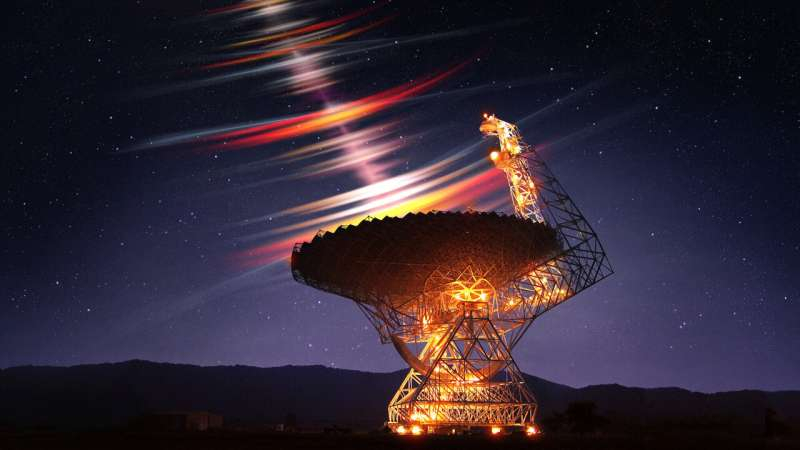Shortest 'fast radio bursts' ever discovered last only 1 millionth of a second

Since 2007, astronomers have been monitoring the sky for quick pulses of radio waves known as Fast Radio Bursts (FRBs). Their best guess for where these bursts come from? A type of super magnetic dead stars: Magnetars.
Usually, an FRB lasts for a brief thousandth of a second, releasing as much energy in that short time that our sun does in a whole day — but an international team of researchers has just reported evidence of FRBs that each last for a millionth of a second (a microsecond). These are the shortest FRBs yet observed.
These ultra-short bursts were spotted coming from FRB 20121102A, a known FRB source about three billion light years away from us. Past searches missed these pulses because their observations weren’t quick enough — it was sort of like trying to sift through sand to find rocks with a strainer, but the strainer’s holes were too big to catch the specific size of rocks scientists were interested in.
Related: Record-breaking radio burst could help us find the universe's missing matter
The researchers needed data where they could track changes down to these millionth-of-a-second timescales. "By coincidence, I found out that there was a public dataset that we could use for this,” lead author Mark Snelders, an astronomer at the University of Amsterdam, said in a press release. The research team used data originally collected with the Green Bank Telescope to search for radio signals from intelligent aliens, part of a project known as Breakthrough Listen.
As FRBs travel through space, they gain a distinctive curve — that is, certain frequencies arrive first, while others are slowed down by gas and dust on the path towards Earth. This information can help map out all the hard-to-see stuff between the stars and galaxies, leading astronomers to a better understanding of how galaxies gather gas from the cosmos.
Microsecond FRBs might be an even more precise tool for interstellar mapping than longer FRBs, like upgrading the prescription on your glasses. And now that they’ve found one source of these microsecond bursts, astronomers want more.
Breaking space news, the latest updates on rocket launches, skywatching events and more!
These new results were published on Oct. 19 in the journal Nature Astronomy.

Briley Lewis (she/her) is a freelance science writer and Ph.D. Candidate/NSF Fellow at the University of California, Los Angeles studying Astronomy & Astrophysics. Follow her on Twitter @briles_34 or visit her website www.briley-lewis.com.
